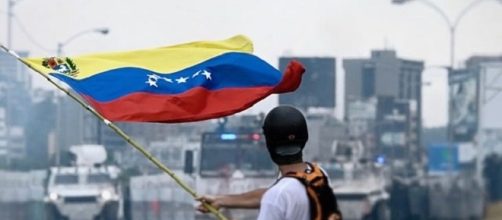Venezuelans have protested for some time now due to the country's worsening economic situation. In 2016, inflation was at 800 percent while the Venezuelan economy contracted by 18.6 percent. A survey released early this year found out that 75 percent of Venezuelans lost 19 pounds each in weight because of poor nutrition. The crisis also brought a rise in a political issues, social movements, increased murder rates and the lack of essential commodities such as toilet paper, milk, and medicine. There have also been reports that some Venezuelans are scavaging from garbage, eating wild fruits and waiting in long queues in food stores and banking halls.
Venezuela's economic crisis
Financial problems in Venezuela began in late 2008 when the prices of crude oil plummeted to below $46. Oil made a significant portion of the country's foreign exchange earnings. Lack of oil revenues at that time reduced the country's GDP. The country's currency which is pegged to the U.S dollar was devalued in early January 2010 from 2.1 Bolivars for one U.S dollar to 4.3 Bolivars for one U.S dollar; the devaluation was made to weaken its currency and to increase earnings from exports by making them cheaper. Currency devaluation, however, does not work well with economic indicators such as inflation. Inflation increases when a country's currency is devalued. This phenomenon is caused by importers who find it unprofitable to sell to a country whose currency has been devalued.
Venezuela imports food and raw materials which are necessities that are necessary for production and living.
A second devaluation of the country's currency occurred in February 2013 where the currency was devalued from 4.3 Bolivars for one U.S dollar to 6.2 Bolivars for one U.S dollar; this again was to ensure exports are cheap and that the country acquires enough foreign currency needed to purchase imports. Inflation went up, and the cost of production and living went up as well. In Mid February 2014, the oil price averaged $108 per barrel, it plummeted to $52 in January 2015 and later to $26 in early 2016. The low price of oil worsened the economic situation of Venezuela as the country was not able to acquire enough foreign currency to pay for its exports.
The country's currency was devalued for the third time in ten years in March 2016 from 6.2 Bolivars for one U.S dollar to 9.9 Bolivars for one U.S dollar. Inflation in early January 2016 was 180 percent, it stood at 741 percent in January this year. The countries foreign exchange reserves also dropped from 4 billion U.S dollars to 1 billion in June this year according to tradingeconomics.com.
Other problems that worsened the economic situation
- Price controls made it hard for producers to make a profit because they were selling at a cost below the costs of production.
- Riots hampered distribution of products, kept tourists out of the country and increased the country's inflation rate.
- Panic buying deprived store shelves off essential commodities due to the fear that such products might lack in the future.


